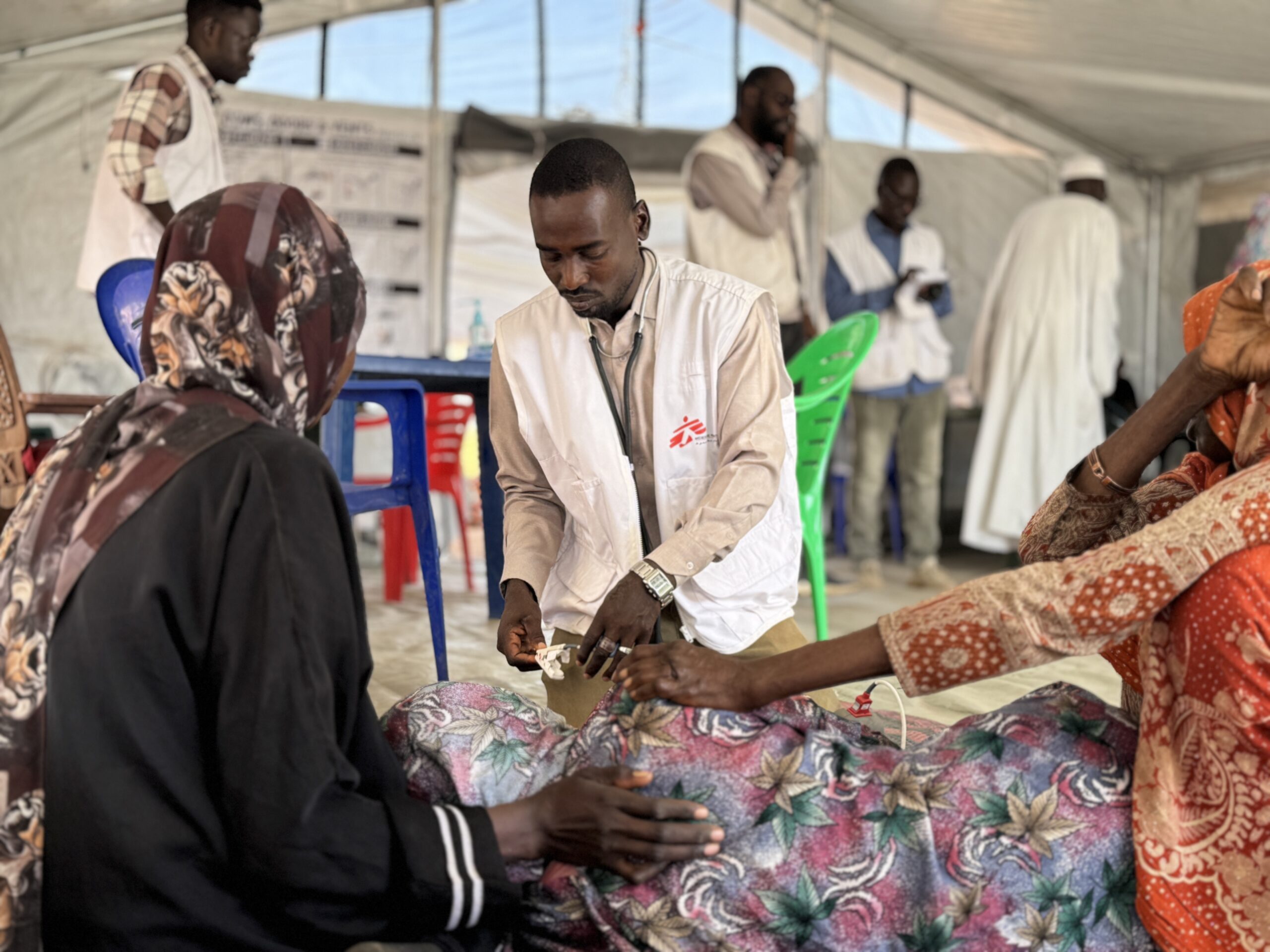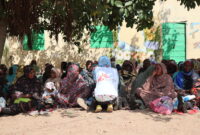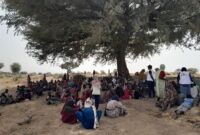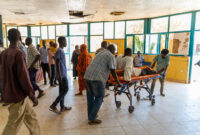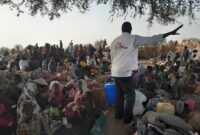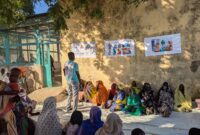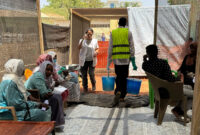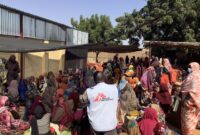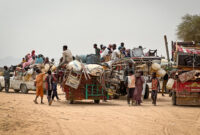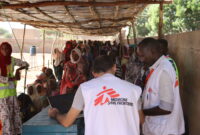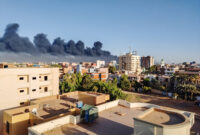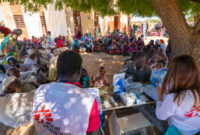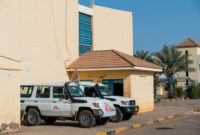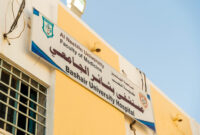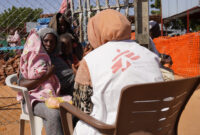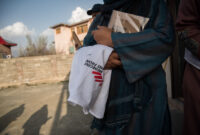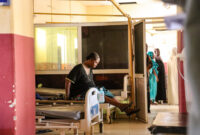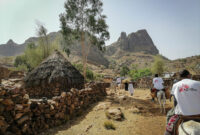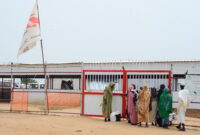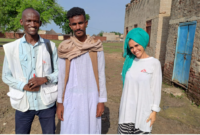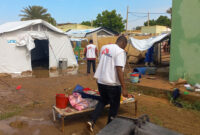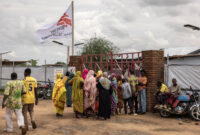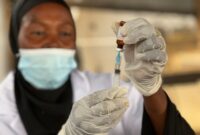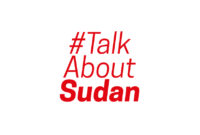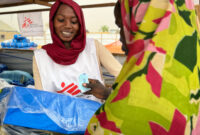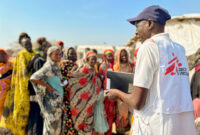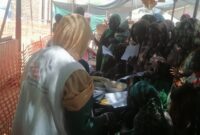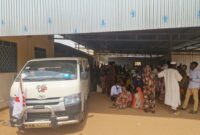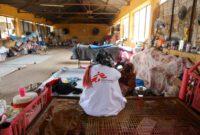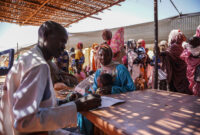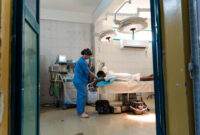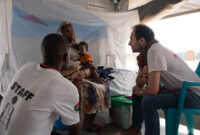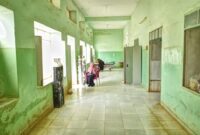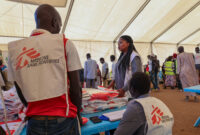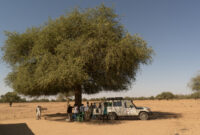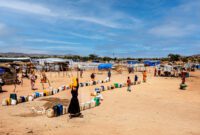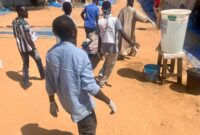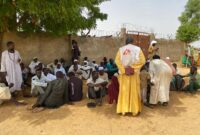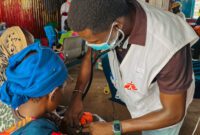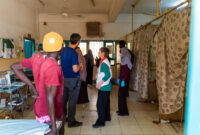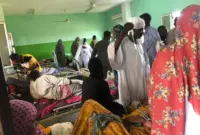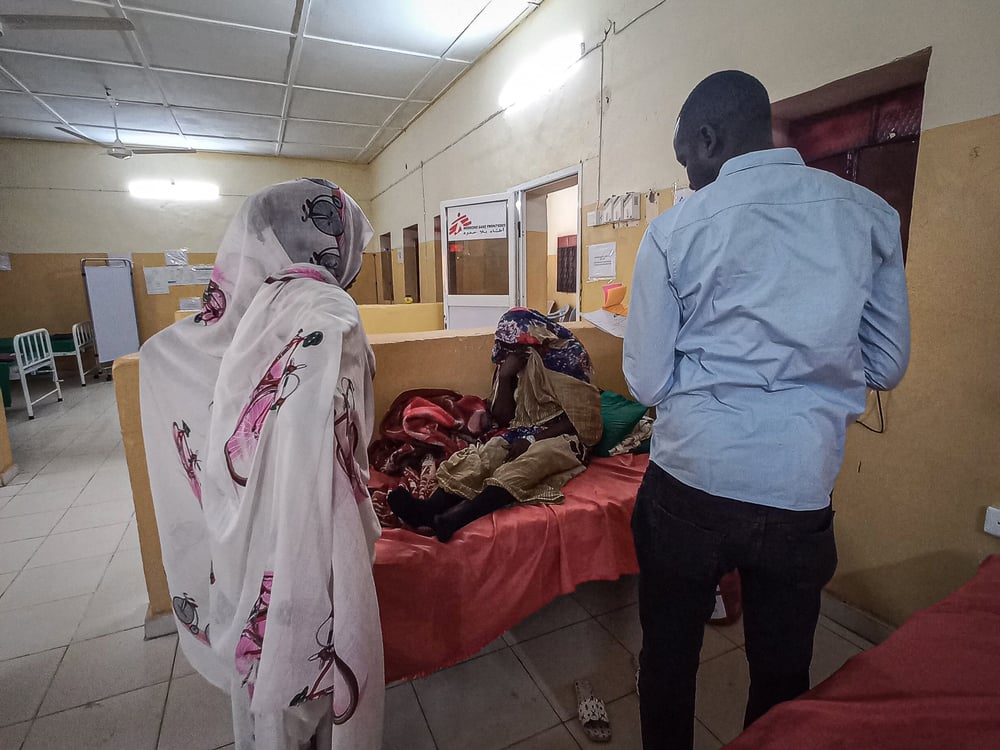Sudan: Thousands of displaced people struggle weeks after deadly attack on Zamzam camp
Lack of shelter, water and food still grips many in Tawila
Three weeks on from the large-scale ground offensive by the Rapid Support Forces on Zamzam camp in early April 2025, reports of intensified fighting in El Fasher continue and more displaced people are arriving in Tawila, North Darfur. With Zamzam camp having been classified as facing famine in August 2024 and many people having been seriously injured in the attack on the camp, people have been arriving in Tawila in an extremely fragile state, overwhelming the emergency and nutritional service of the MSF-supported hospital in the city.
“They came with their machineguns. They attacked and killed people – including children. They burnt our house with everything we had inside. They raped the women. They killed, they looted,” says Mariam, who reached Tawila three days after the attack on Zamzam took place. “Even before the attack, people had died of thirst and starvation because of the siege imposed on Zamzam for the past year. Everything was so expensive and unaffordable in the end.”
“Under this tree, it is so crowded, we’re lacking water, or shelter. There is nothing to eat, everyone is hungry.”
Ibrahim, who fled Zamzam camp on foot with 11 of his family members
She has arrived in Tawila with her mother, her sisters and their own children. A household of 20 people. All of them now spend their days squeezed against each other under the makeshift shelter they built with a few branches and a piece of fabric, sharing the little shade it provides.
“Here, there is no food. A few people in Tawila shared a bit of millet flour with us, which we used to make porridge. This is how we have survived so far: begging. We get the water from a tank, but they only let us fill one jerrycan per family and we are 20 in ours. We only have one blanket for all of us.”
Since April 12, when people first began reaching Tawila from Zamzam, the areas surrounding the town have been completely transformed, with tens of thousands of people now estimated to be living in makeshift shelters in fields that were totally uninhabited just a few weeks ago.
“For four days now, we have been staying here as you see us, with nothing: no walls, no roof,” says Ibrahim, who fled Zamzam on foot with 11 of his family members. He carried one of his children on his shoulders and another on his back for five days. It’s the fourth time in 10 years he’s been displaced in similar circumstances. He describes how soldiers entered people’s homes, brought them outside and opened fire. Three of his brothers were killed like this. On his way to Tawila, his possessions were looted and he witnessed people being beaten so harshly that they could no longer move.
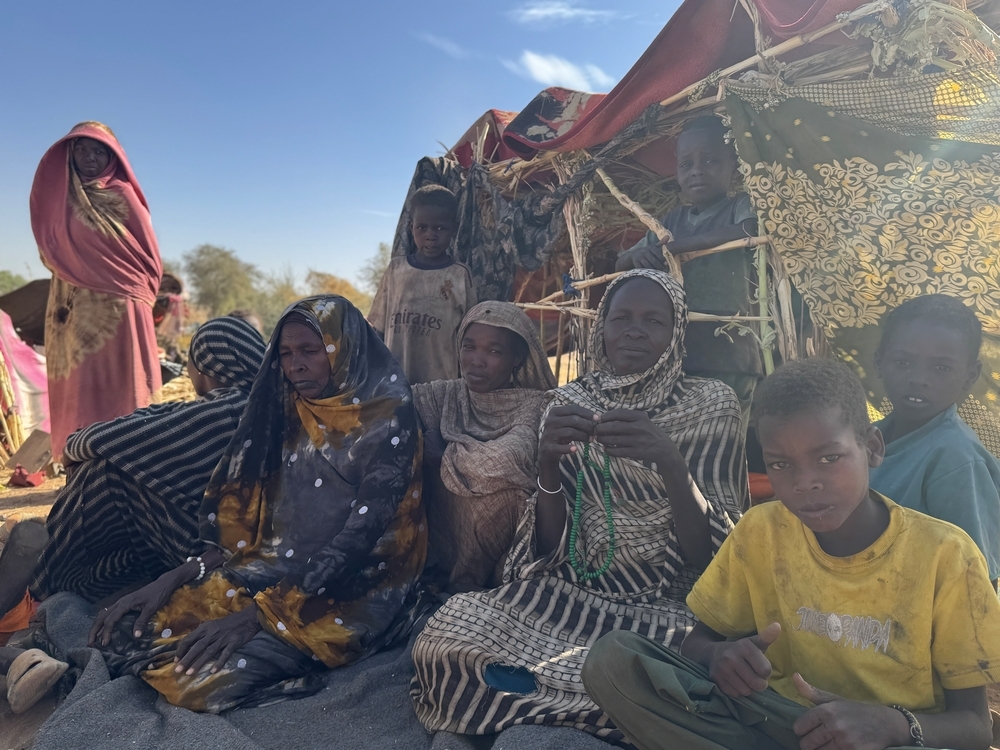
“Under this tree, it is so crowded, we’re lacking water or shelter. There is nothing to eat, everyone is hungry,” he says. “We’re getting some food from the community kitchens. Sometimes, we manage to get some rice when they distribute the meals, but if we don’t, we must wait until the next day to eat something. For water, we go to a borehole, but there are so many people and we have to wait hours to be able to drink.”
“The youngest I saw was a seven-month-old baby with a bullet wound that went under his chin and into his shoulder. We also received patients as young as one day old suffering from dehydration.”
Tiphaine Salmon, MSF head nurse
A handful of organizations are present in Tawila, but the number of people in need of assistance far exceed the capacity to respond. MSF teams have set up two health posts on the main arrival sites to provide newcomers with water and immediate nutritional and medical support. Our colleagues are referring critical patients to Tawila’s local hospital supported by MSF since October 2024.
Tiphaine Salmon, an MSF head nurse, was working in the hospital on the day the mass influx of severe cases began on April 12. “The emergency room was overwhelmed,” she says. “Over the first few days, the number of patients in the hospital almost doubled. At one point, we had four patients in a bed because we did not have enough space. A lot of people had gunshot wounds and blast injuries.
“We’ve treated 779 people over the past three weeks, including 138 children, and 187 of all the patients were severe cases. The youngest I saw was a seven-month-old baby with a bullet wound that went under his chin and into his shoulder. We also received patients as young as one day old suffering from dehydration. Many children arrived without their parents – and many parents were searching desperately for their children.”
At the same time, our teams in the hospital witnessed an explosion of admissions in our intensive therapeutical feeding centre, which treats children under five, suffering from severe acute malnutrition in addition of other health issues. In the week following the influx, admissions increased almost tenfold from an average of six or seven per week, to more than 60. They were mostly children from Zamzam: a clear reminder of what the nutritional situation in the famine-stricken camp was.
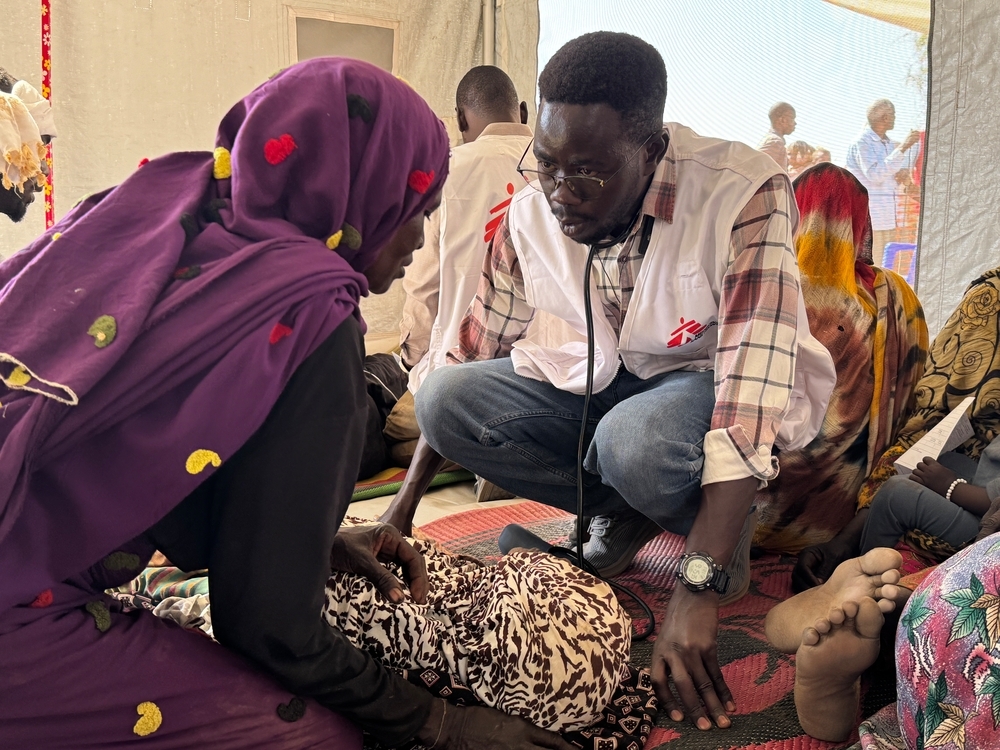
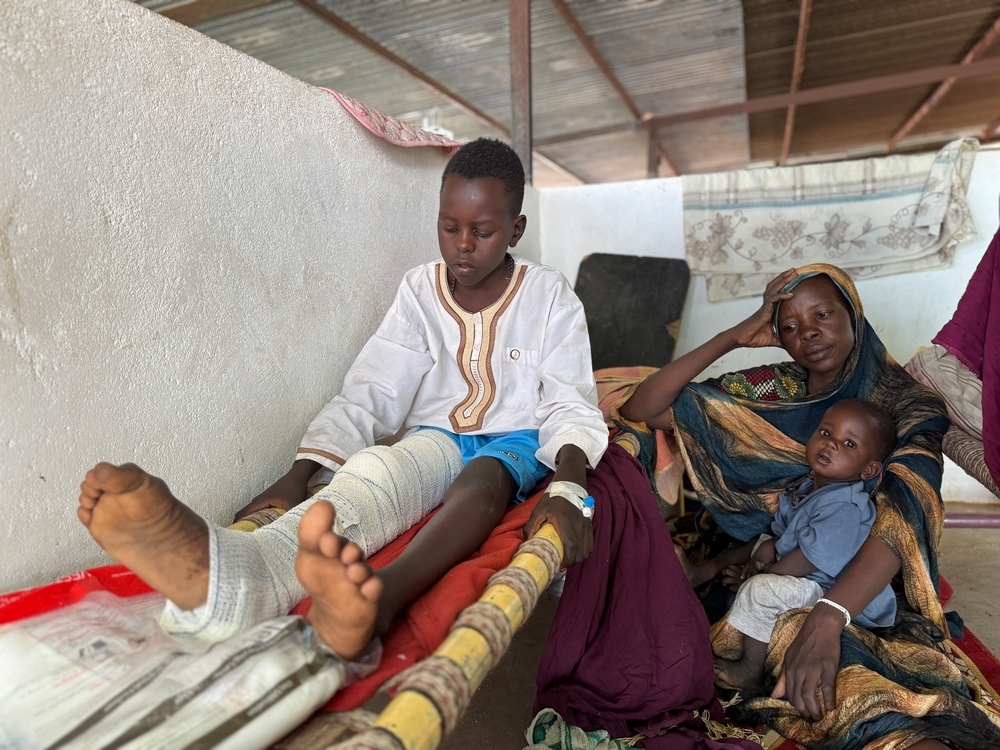
To make the situation worse, a suspected measles outbreak began in Tawila in March. In the hospital, MSF treated over 900 suspected measles cases since early February, with more than 300 people in critical condition requiring hospitalization. The situation that led our teams to launch a large-scale vaccination campaign in the city on the first week of April, reaching 18,000 children under five. But one week after the massive influx of people from Zamzam began, our teams examined several suspected cases among children who had just arrived from the camp, meaning that measles had already begun to spread in the displacement sites.
Malnutrition and measles can be an especially deadly combination with disastrous consequences for young children, in densely populated sites without access to basic hygiene needs.
MSF is continuing to scale up our intervention in Tawila. As well as carrying out hundreds of medical consultations per day, our organization has also donated dry food to local community kitchens, enabling them to prepare and distribute more than 16,000 meals per day. We have been providing 100,000 litres of clean water daily and we have additional plans to construct 300 latrines.
But the needs remain immense and far outstrip our capacity to respond. Although other actors have also mobilized and a first mass food distribution has taken place, the humanitarian response still needs to be urgently and rapidly scaled up. We urge UN agencies to substantially increase their presence so they can coordinate a response of a magnitude that will meet the ever-growing needs.
